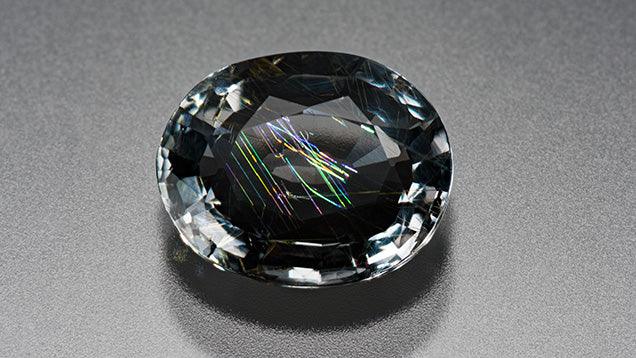News
What is the rarest gemstone?

In the fascinating world of gemstones, rarity often adds to the allure and value. For those captivated by the beauty and uniqueness of precious stones, understanding which gemstone is the rarest can be a source of both intrigue and investment.
This article delves into the realm of what are the rarest gemstones, exploring their characteristics, value, and the factors contributing to their rarity.
The allure of rarity in gemstones
Rarity in gemstones is determined by several factors including their natural occurrence, the conditions required for their formation, and the demand within the market.
Rare gemstones are often sought after by collectors and investors due to their limited availability and exceptional beauty. They frequently command high prices and can become treasured heirlooms.
Top contenders for the title of the rarest gemstone
When exploring the world of precious stones, certain gems stand out not just for their beauty but also for their extreme rarity. The quest to discover what is the rarest gemstone often highlights a few exceptional contenders, each with its own unique characteristics and scarcity.
Painite

Painite is frequently cited as one of the rarest gemstones in the world. Discovered in Myanmar in the 1950s, it remained one of the rarest minerals on Earth for decades. Painite’s rarity stems from its extremely limited supply and the fact that it only occurs in specific geological conditions. The gem comes in various shades, including brown and red, and its scarcity makes it highly valuable.
Jadeite

Jadeite, often confused with the more common nephrite jade, is a precious gemstone with a limited supply. True jadeite is predominantly found in Myanmar and is highly prized for its vivid colors, ranging from emerald green to lavender. Its rarity and the meticulous process of mining and carving jadeite contribute to its high value.
Red Beryl

Red beryl, also known as bixbite, is another gemstone known for its rarity. Found primarily in Utah, USA, and a few locations in Mexico, red beryl is incredibly rare due to the specific conditions required for its formation. Its bright red hue and the difficulty in sourcing it make red beryl a prized gemstone for collectors.
Taaffeite

Taaffeite was initially mistaken for spinel until its true identity was revealed by gemologist Richard Taaffe. This gemstone is exceptionally rare, with only a few known sources in Myanmar and Sri Lanka. Its rich violet to lavender hues and the limited number of specimens contribute to its rarity and high value.
Musgravite

Musgravite, discovered in Australia’s Musgrave Ranges, is one of the rarest gemstones due to its extremely limited supply. The gemstone is part of the taaffeite family and can appear in colors ranging from greyish-green to violet. The rarity of musgravite, coupled with its unique colors and high demand among collectors, makes it a coveted gem.
Factors contributing to gemstone rarity
The formation of rare gemstones often requires specific geological conditions that are not commonly found. For instance, painite forms under unique conditions that make its occurrence extremely rare. These geological factors play a significant role in determining how rare and valuable a gemstone can become.
Limited mining locations
Many of the rarest gemstones are found in very few locations around the world. For example, jadeite is primarily mined in Myanmar, and red beryl is predominantly found in specific areas of the USA and Mexico. Limited mining locations contribute to the rarity of these gemstones and their high market value.
Market demand
The demand for gemstones also affects their rarity. As collectors and investors seek out rare gemstones, the competition for available stones can drive up their value. High demand coupled with limited supply makes certain gemstones more sought after and valuable.
Production and cutting
The process of cutting and polishing gemstones can also impact their rarity. Some gemstones are challenging to cut due to their hardness or unique crystal structures. This difficulty can limit the number of high-quality gemstones available for purchase, further contributing to their rarity and value.
The value of rarity
Rarity not only affects the value of gemstones but also their desirability among collectors and investors. Rare gemstones often become symbols of prestige and exclusivity, making them highly coveted items. The combination of limited supply, high demand, and exceptional beauty makes these gemstones valuable assets in the world of precious stones.
Final thoughts
In summary, the question of “what is the rarest gemstone” encompasses a variety of precious stones that are valued for their limited supply and unique characteristics.
Painite, jadeite, red beryl, taaffeite, and musgravite are just a few examples of gemstones that hold the title of being among the rarest in the world. The rarity of these gemstones is defined by their geological formation, limited mining locations, and market demand.
For those interested in the world of precious stones, understanding the rarity and value of these gems can enhance their appreciation and investment potential.
By exploring the rarest gemstones and the factors contributing to their rarity, individuals can gain a deeper understanding of what makes these precious stones truly exceptional.
